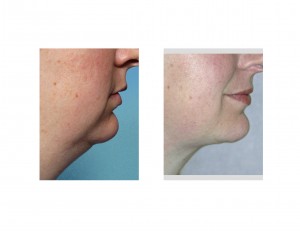There are a lot of patients who are halfway between injectable fillers and a traditional facelift. Their facial contouring concerns are not really adequately addressed with short-acting fillers but they are not yet prepared to go as far as a surgical facelift. Most of these patients are between the ages of 40 to 50 and may already be using or at least have tried Botox and injectable fillers. As they have continued to get older, they have found that new aging problems have developed around the jawline, the neck and the lower face.
The lower part of the face is out of reach for what any injection methods can really improve. Helping to bridge the gap before a facelift is considered is a facial procedure that I call in my Indianapolis plastic surgery practice ‘Smart and Tyte’. To help remove neck and jowl fat and tighten skin, the combination of Smartlipo and Skin Tyte is done. This is a two-pronged approach using laser liposuction for the neck and jowls followed weeks later by a series of SkinTyte office treatments.

Beginning three weeks after surgery, in-office pulsed light treatments (Skin Tyte) are done to aid the skin tightening process. Between the intial heat of the laser and these treatments, good skin contraction can be obtained. The Skin Tyte process is done every two weeks for a series of four total treatments. I judge the final outcome of this combination approach at six weeks after completion of the final in-office treatment.
For patients with the beginning signs of jowling and neck changes with faborable skin tone, really good contouring of the fat and tightening of the skin can be obtained. Such results can last for years and can turn back the clock five to seven years. Because the laser treatments isdone under the skin, it can be performed on patients with any type of skin. Skin Tyte is turned down in power and intensity for darker pigmented patients to avoid any risk of pigmentation changes for the external treatments.
The key to a successful ‘Smart and Tyte’ procedure is patient selection. It is not for every patient that wants to avoid a facelift. In fact, most patients that want to avoid a facelift usually are in need of exactly that. While these procedures have a minimal downside, their greatest risk with improper patient selection is lack of any significant change making it a poor economic value.
Dr. Barry Eppley
Indianapolis, Indiana


